Nokia Lumia 900 Review - Windows Phone with LTE
by Brian Klug on April 3, 2012 9:00 PM ESTCellular, WiFi, GPS, Speakerphone
The Lumia 900 uses Qualcomm’s MDM9200 baseband for cellular connectivity. It’s a 45nm LTE UE category 3 part we’ve seen numerous times before (the MDM9600 is functionally the same but includes CDMA2000 1x and EVDO 3GPP2 suite air interface support) but this is the first time we’ve seen it (and LTE) on a Windows Phone. I have to admit that at first I wondered what use cases on Windows Phone could really benefit from the inclusion of LTE, but having faster cellular connectivity does indeed make a perceptible difference. Interestingly enough Nokia does note the presence of Rx diversity for WCDMA on the Lumia 900 front and center, both under their “design” tab and under Data Network on the specifications page. It’s awesome to see another handset vendor realize that great cellular performance is noteworthy, even if Nokia has always been shipping handsets with either pentaband or great performance.
| Nokia Lumia 900 AT&T- Network Support | |||||
| GSM/EDGE Support | 850 / 900 / 1800 / 1900 MHz | ||||
| WCDMA Support | 850 / 900 / 1900 MHz (official, 2100 / AWS in FCC) | ||||
| LTE support | 700 MHz (Band 17), AWS (Band 4) - UE Category 3 | ||||
| Baseband Hardware | QCT MDM9200 | ||||
| HSPA Speeds | HSDPA 21.1 (Cat 14) / HSUPA 5.76 (Cat.6) | ||||
Since the Lumia 900 is headed to AT&T LTE, it includes LTE band 17 (700 MHz) and band 4 (AWS) support. For 3G WCDMA the Lumia 900 supports the usual suspects outlined in the table below, but also includes AWS approval in the FCC database. Were you to score an unlocked Lumia 900 there’s a chance it might just work on T-Mobile. Just like the Lumia 800 I suspect there are a few variants of the Lumia 900 with different WCDMA bands supported.
To test cellular performance I used BandWidth from the Marketplace which appears to use the speedtest.net servers. I tested AT&T LTE up in the Phoenix, AZ market which is currently 10 MHz FDD-LTE on band 17 for AT&T which corresponds to a maximum of 73 Mbps of downstream for a UE Category 3 device. BandWidth only offers a limited history buffer and no export functionality, but I saw speeds of up to 35 Mbps on the Lumia 900 and average speeds around 15–20 Mbps. Subjectively what I’ve seen on the Lumia 900 is very similar to the performance I’ve seen testing an AT&T Galaxy Note in the same market whose data I’ll share soon.
On 3G WCDMA, performance is definitely helped out by the presence of Rx diversity. I have seen 10–11 Mbps at my house with excellent proximity to an AT&T cell site. In other traditionally challenging places the Lumia 900 does a great job staying connected in my home market which lacks AT&T LTE.
The Lumia 900’s cellular settings page includes the ability to switch the device’s preferred air interface between EDGE/GPRS (E), 3G WCDMA (3G), and 4G LTE (4G). However the labeling here is actually hilarious - AT&T’s WCDMA “4G” marketing carries over to the Lumia 900, so selecting “3G” from the drop down will score you a “4G” indicator in the status bar. Likewise selecting “4G” from the drop down gets you “LTE” in the status bar. Finally, a concrete example of where AT&T’s re-branding marketing has resulted in an actual namespace collision!
I think it’s also worth noting that the Lumia 900 includes an excellent field test app with fields for every air interface which you can launch by dialing ##3282# just like on many other WP7 devices.
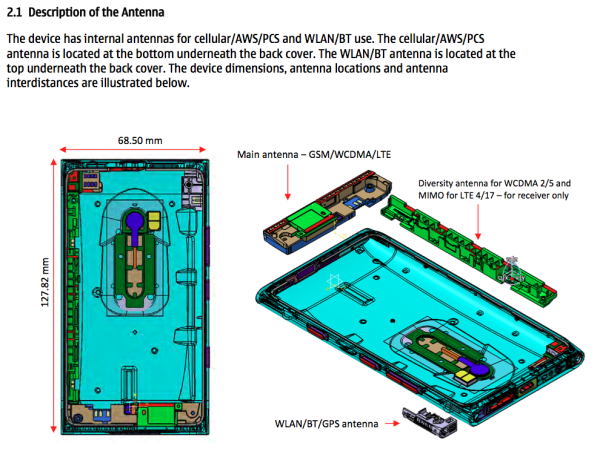
Antenna positions (from FCC Test Report)
Like many other phones, the transmit antenna is at the bottom of the device for GSM, WCDMA, and LTE. The WCDMA Rx diversity antenna and LTE MIMO antenna is located on the side with the volume and power/standby buttons. Remember that every LTE category 2 and above device needs two receive antennas for MIMO.
A number of users have asked me whether or not the Lumia 900 works with any old AT&T SIM, or if you absolutely need the SIM that comes with the device and LTE provisioning. I swapped my normal iPhone data plan provisioned SIM into the Lumia 900 and was able to get 3G WCDMA working fine. I didn't get a chance to test whether AT&T LTE works with that SIM, but I strongly suspect it doesn't. One small extra step is that you will need to use Nokia’s Network Setup application (available on the Marketplace) to change your settings from AT&T LTE to AT&T 3G APNs as shown above (ostensibly from pta to phone) so you can get data working, otherwise it won’t work.
WiFi
The Lumia 900 includes 802.11b/g/n WiFi - there’s only 2.4 GHz support just like every other WP7 phone, no 5 GHz yet to speak of. The device also connects at a single spatial stream 802.11n 72 Mbps short guard interval, 20 MHz channel rate. I’m fairly confident that the Lumia 900 is using Broadcom’s BCM4329 just like the Lumia 800, but I’m unable to verify to be completely sure. Either way I haven’t seen anything errant with WiFi on the Lumia 900 at all, range and performance is totally acceptable.
The Lumia 900 locates the WiFi, Bluetooth and GPS antenna in the same place, part of a module which appears to be part of the headset jack based on the FCC description.
GPS
Speaking of GPS, I had no issues at all with getting a good GPS fix on the Lumia 900 either while just playing with Bing maps, Nokia Maps, or while getting turn by turn directions from Nokia Drive. I strongly suspect that the Lumia 900 is using the GNSS functionality off of MDM9200, but it’s not clear whether GLONASS is supported or this is just GPS.
Speakerphone
The Lumia 900 speaker is at the very bottom of the device, just like the 800. Subjectively I have no issues with the 900's volume at all, either while on a speakerphone call or using it for navigation using Nokia Drive. In our controlled test with a sound data logger placed 3 inches away from the phone, the result the Lumia 900 is above average and definitely louder than the Lumia 800.
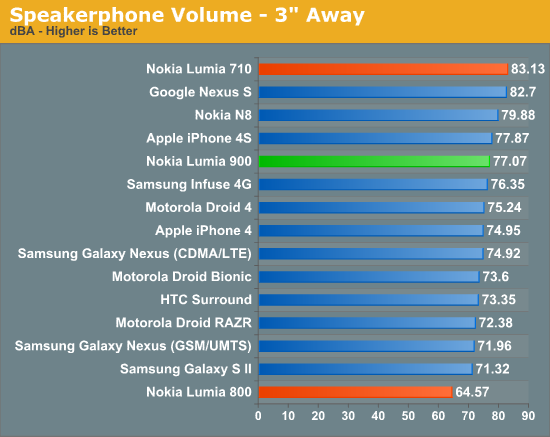
The next test is how well the Lumia 900's noise rejection works, which uses the second microphone at the very top in conjunction with the primary microphone in the speakerphone grille at bottom to do some common mode noise rejection. To test this I did what I always do and placed a call between the Lumia 900 and another AT&T phone (AMR-NB) and recorded the output of that call while increasing the volume of some music and decreasing it.
The results are excellent, as even at maximum volume I have a hard time discerning the background sound at all. I suspect that Nokia is using the Fluence noise rejection provided onboard the Qualcomm SoC, but I'm still not completely certain.


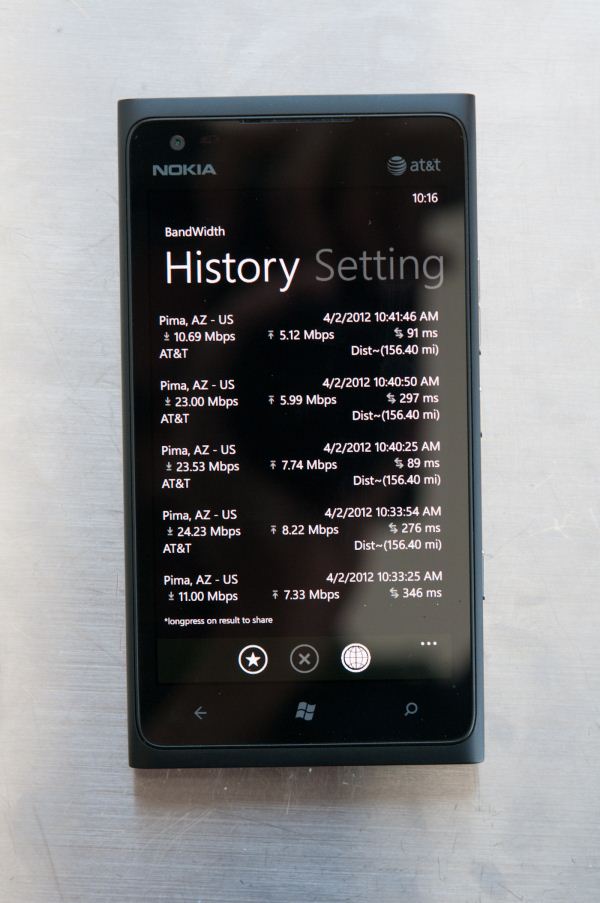
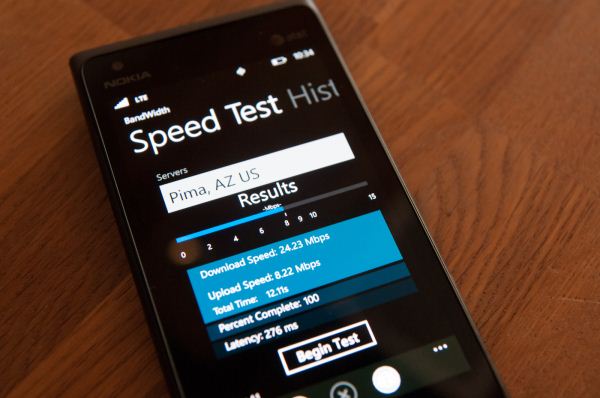
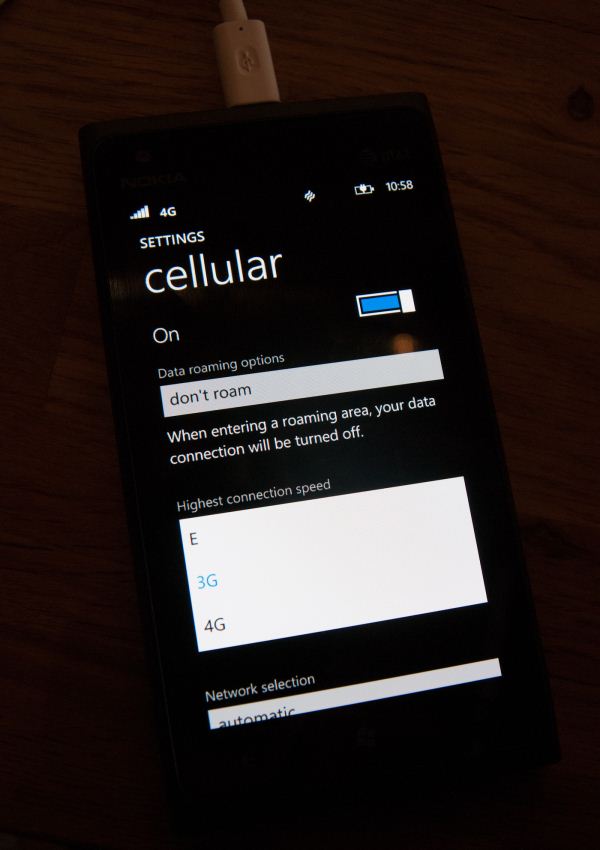
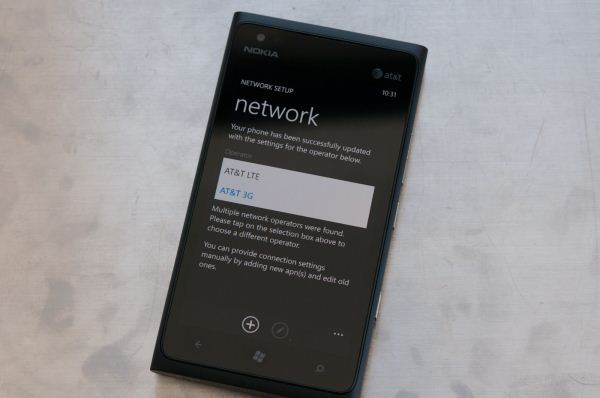








128 Comments
View All Comments
BabelHuber - Wednesday, April 4, 2012 - link
---> Can be used like a USB-stick. No iTunes/ Zune needed. Simply plug your phone into your PC and use the Explorer you like--> I can connect USB-harddiscs to my Asus TF Prime. Like in Windows, I can messs around with a file explorer there
--> File explorer: Android has a real Linux file system. You can handle files like you have always done with computers. Hence cloud-services are not mandatory.
--> Supports SD cards including full access via file explorer
--> Allows installation of apps that were not downloaded via Google Play/ market. You can install whatever you want
--> Real multitasking
--> Allows tweaking: I have e.g. installed the rSAp-functionality on my Android phone last weekend:
I have installed new system libraries, maually replaced system files etc. to get it work.
It was a lot of effort, but at least I could do it. My warranty is gone now, though.
To sum it up: Android is like a real Personal Computer. You can do whatever you want with it, there are no restrictions whatsoever.
As a downside, you can mess up your phone completely, too. But this is the price of freedom
steven75 - Wednesday, April 4, 2012 - link
Ah so all things 99% of the market doesn't need or want. Gotcha!eddman - Wednesday, April 4, 2012 - link
iphone does not support them and still sells millions. Most people don't care about those features on a phone.ol1bit - Wednesday, April 4, 2012 - link
I do, and I know lots of others who like that as well, otherwise, why have a smart phone?eddman - Wednesday, April 4, 2012 - link
I said most, not all. Obviously for users who want those features, android is the only choice.I'm just saying that the lack of those features won't necessarily impact the sales, judging from how well iphones sold and keep selling.
BabelHuber - Thursday, April 5, 2012 - link
Well, from my experience some iOS-users don't even know that functionality is missing.When I quickly use my phone as USB-stick to transmit data from one notebook to another, they even are surprised (and yes, such things don't occur often, but sometimes this comes in handy)
Or when I browse my files using an actual browser, they are surprised that I don't have to open an App first.
Some users are so locked into the Apple ecosystem that they don't even expect their smartphone to act as a small PC, even though it is one.
They act as if their phone was a fixed-function-device because of technical limitations, not because openness was omitted on purpose by the manufacturer.
Xale - Friday, April 6, 2012 - link
Humerously, those aren't even Android features, but Feature Phone (Dumbphone) features.Stuff that could be done a decade ago.
TGressus - Thursday, April 5, 2012 - link
why indeed?It seems like a more powerful tablet experience would serve folks better. Then the phone can go back to being a sleek and inexpensive afterthought.
What it's going to take to get there is a better tablet OS. MS is poised to bring it first, which I don't think many saw coming.
tipoo - Wednesday, April 4, 2012 - link
Its almost funny how close to Windows vs OSX vs Linux this has become. Android gives you by a landslide the most options, iOS has a great user experience but cages advanced users in a bit too much, WP7 is somewhere in the middle on both fronts.WP7 seems to trade off absolute speed for smoothness. Looking at the browser synthetic benchmarks its much slower than even old single core Android or iOS phones, but what reviews can't show you is how well it lets you navigate pages during that loading time.
Braumin - Wednesday, April 4, 2012 - link
Actually they don't show load times, every site on the earth focuses on javascript as the be all and end all for web browsing.